Garlic is a super magical plant in which you can grow easily in your raised bed. This is a perennial plant and the best thing about the garlic plant is that it can grow easily in a limited space.
When we talk about how to grow garlic then you can use only a clove of its bulb and sow into the ground and it will easily convert into a grown plant. The danger of pest and diseases are very rare in garlic plants.
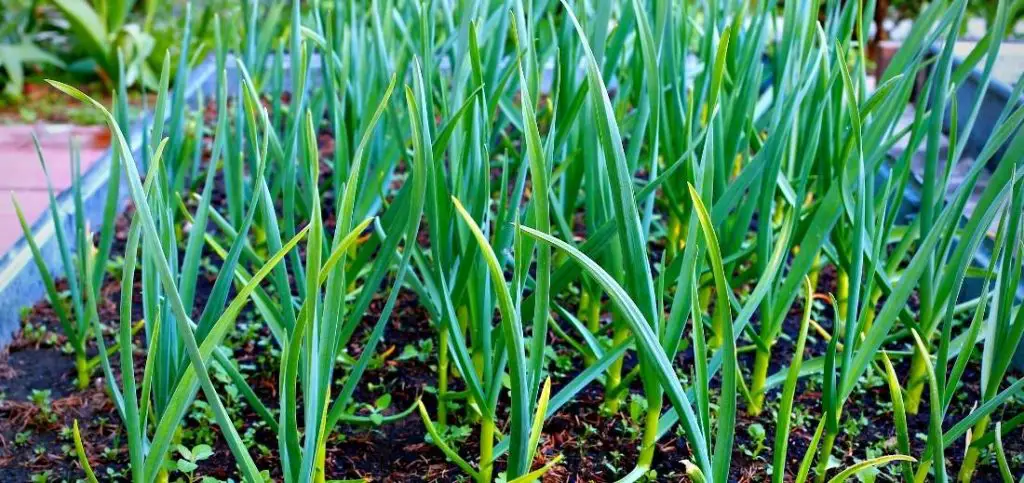
There are many different ways to grow garlic whether it’s growing them indoors, growing them in water, or outdoors, there always will be struggles and confusion. For all the ways you have to work hard to get the fresh vegetable for your food.
Advantages of Garlic
There are many benefits of garlic, it has been used all over the world for thousands of years. Garlic is used to maintain the blood system. it can manage the cholesterol level of your body which reduces the heart attack.
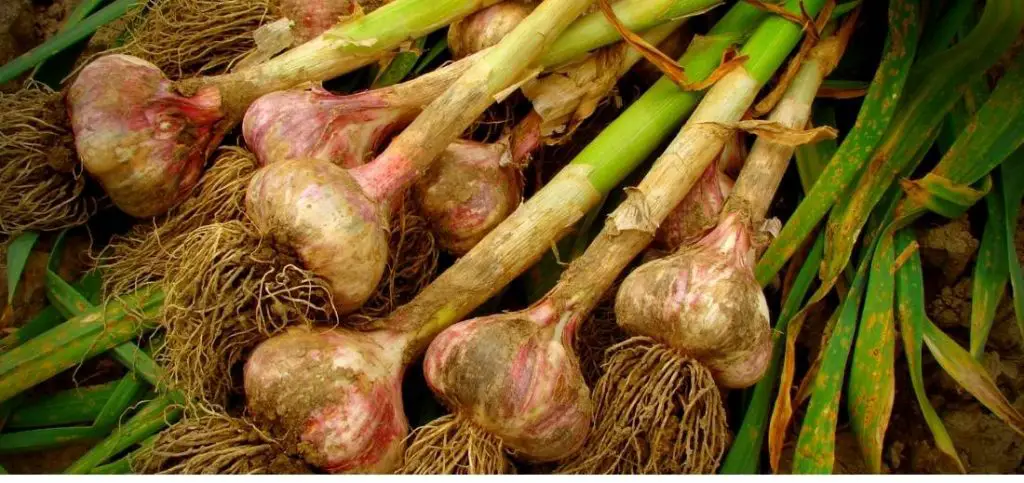
It can be used for the prevention of lung cancer, prostate cancer, breast cancer, stomach cancer, rectal cancer, and colon cancer. Besides this, throughout history in the Middle East, East Asia, and Nepal garlic have been used to treat bronchitis, hypertension, high blood pressure, TB tuberculosis, liver disorder, diabetes, and fevers.
The taste of food boosts with the use of garlic. In most of the countries, it is a basic ingredient of every recipe. It is used in different remedies. If you want to reduce your weight then garlic can help you. By growing it at your home you can get fresh and healthy garlic.
Varieties of Garlic for Raised Beds
Basically, there are three types of gardens you can grow in containers or raised beds. Choose the type of Garlic according to your condition, requirement, and needs.
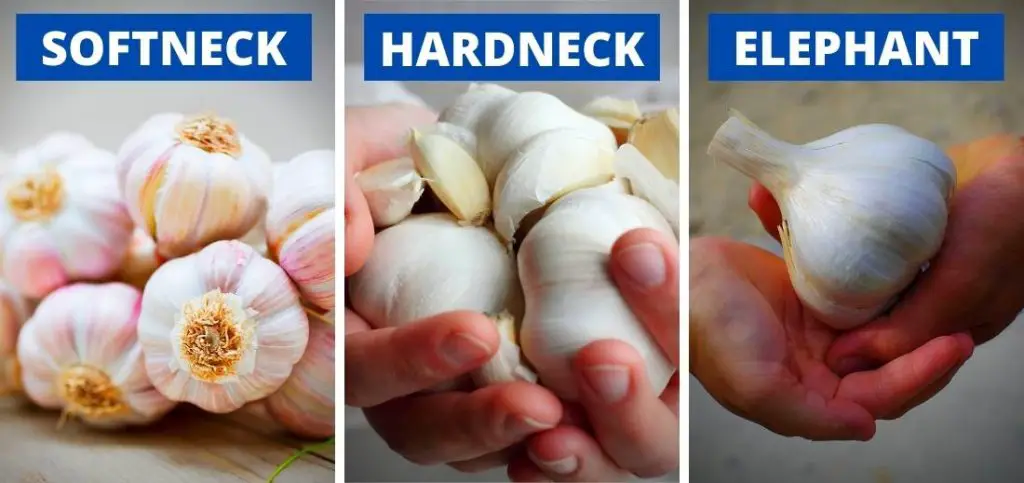
- Softneck
- Hardneck
- Elephant
Softneck
The variety of Garlic which is favorite for the average gardener is the softness. It is the most sold variety in the market. Its flavor is mild and you can easily store it for a long time.
This type of garlic is best for the warm climate. It matures late and stores very well, you can store it almost four months easily if the conditions are favorable for it. Its production is very good and superb.
Hardneck
Hardneck has a strong flavor as compared to the soft neck. It is ideal for roasting and general use. You cannot store it for a long time and it is the only drawback of it. Cold climate is suitable for it.
It can easily tolerate the harsh weather. Its maturity time is very short from the end of June to mid-July. It should be used when it is fresh because you cannot keep it for a long time.
Elephant
Even after cooking its taste remains mild and sweet. You can produce a large number of cloves of garlic from this variety. Most people think that elephant garlic is a type of leak. Leave this discussion to the experts. It is not recommended to grow elephant garlic in your raised beds but if you want to do it then it is up to you. This type of garlic is fun in children’s gardens due to its large size and non-toxicity.
When to Plant Garlic?
The best time for planting garlic is Fall but you can also plant it in early Spring because it needs fresh soil. Most of the people plant it in Spring when they are preparing their spring raised beds for their garden. The growing season of Garlic is about six to eight months.
This is good to know that it is inexpensive since it takes so long to grow to maturity. The spring-planted bulbs are often smaller than fall-planted blubs, but should still be tender and delicious.
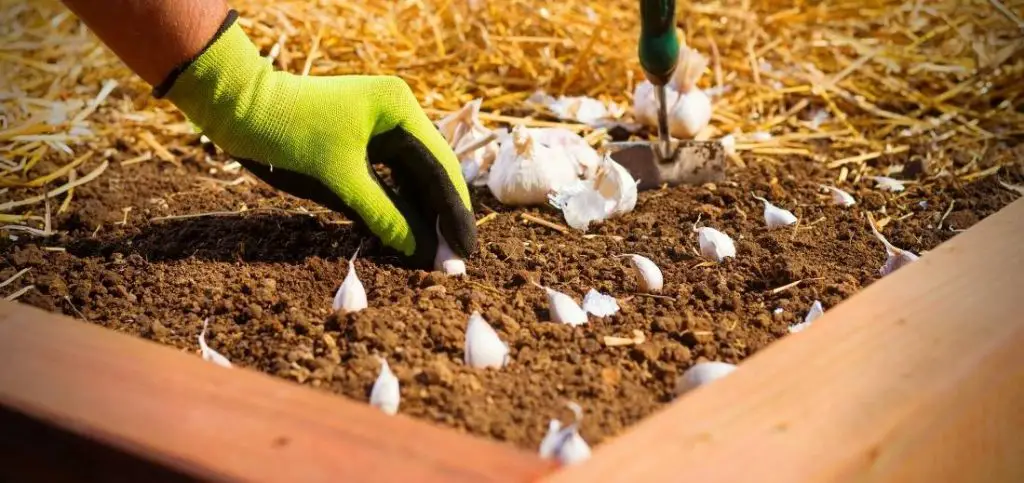
Where to Grow Garlic?
Garlic plants need full Sun, you have to to maintain the availability of sunlight for it if you want a good harvest of full-sized bulbs of garlic. Choose the place that is not prone to waterlogging so the bulbs do not rot in the winter. It is suggested that you should grow garlic in your raised beds because in winter raised beds are good for its production and save from waterlogging.
Read More: How to Build Tall Raised Garden Beds?
How to Plant Garlic
The temperature needs for the germination of Garlic is below 10°. This is the reason we can only plant it in autumn or very early spring. If you don’t follow the advice then the garlic would not split into cloves and you will not able to get full-size bulbs with large numbers of cloves.
There are many factors that are very important for the growth of garlic plants in your raised beds. These factors are temperature, water, location, type of soil, and fertilizer.
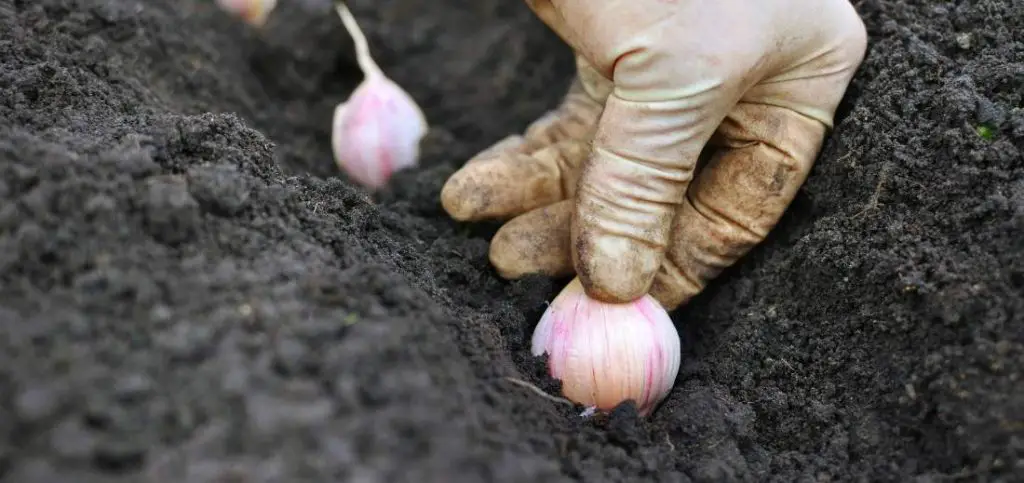
Choosing Right Garlic Cloves
The best garlic bulbs produce a good crop, so your selection of the bulb is very important.
- If you buy the bulbs from the market then there is a chance of virus or eelworm which can carry disease into your garden.
- Only fatter outside the clove is suitable for planting. Don’t use thinner one toward the center of the bulb. The outside clove is healthy and free of any mold or dark patches.
- When you are ready to plant the clove then separate it from the bulb. If you separate it first then it will become soft and prone to disease.
- Almost every club bulb has twenty cloves, these all cloves can be planted separately and are able to make 20 bulbs.
- You can use a knife or your fingernail to break the skin that holds the individual club and gently tease out the class one by one.
- No need to peel off the skin of the club leave it, as it is.
- The upper side of the clove is its top and the lower side is its bottom. When planting the clove into your raised bed you should be careful because the bottom end goes into the soil with the top and uppermost.
Soil preparation
The pH of the soil is very important for the development of your plant, pH neutral soil makes it possible that water rot or fungal diseases don’t develop in the soil. If you planted onions, leeks or garlic last season then avoid planting garlic again in the same raised beds.
This shows that if you take care of soil’s health then less risk of passing any disease to the new crop. In a raised bed it is very easy to maintain the fertility of the soil. Garlic like loamy soil that’s well-drained and plenty of organic matter.
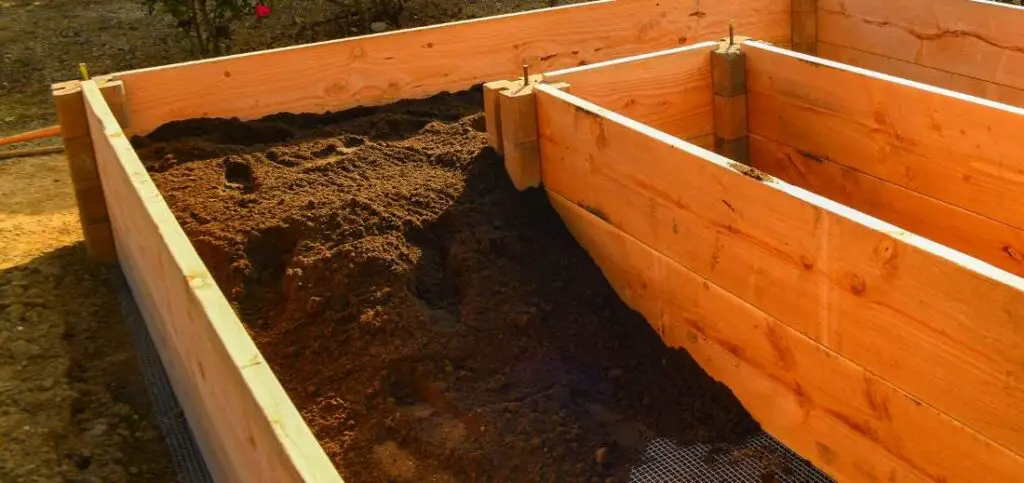
You can increase the fertility of the soil by adding manure. Keep in mind that you cannot add manure too close to the harvest time. Make it possible, turn the liquid manure after spraying so that the nutrients don’t evaporate.
You need about half to one pound of fertilizer and almost 2 inches of compost, now spread it over the top of the raised bed. Mix it with six inches of high-quality soil with the help of spade or hoe. The best mixture of the soil is one-third of high-quality soil, one-third of compost, and one-third of peat moss.
Read More: How To Improve The Soil In My Raised Beds?
Planting
Now take all the cloves from bulbs for planting. Push each clove at least one to two inches into the soil with the pointed and facing up. There is no need for wide row spacing in a raised bed but 20 to 25cm spacing between the plants and 25cm between rows is very good for the plant.
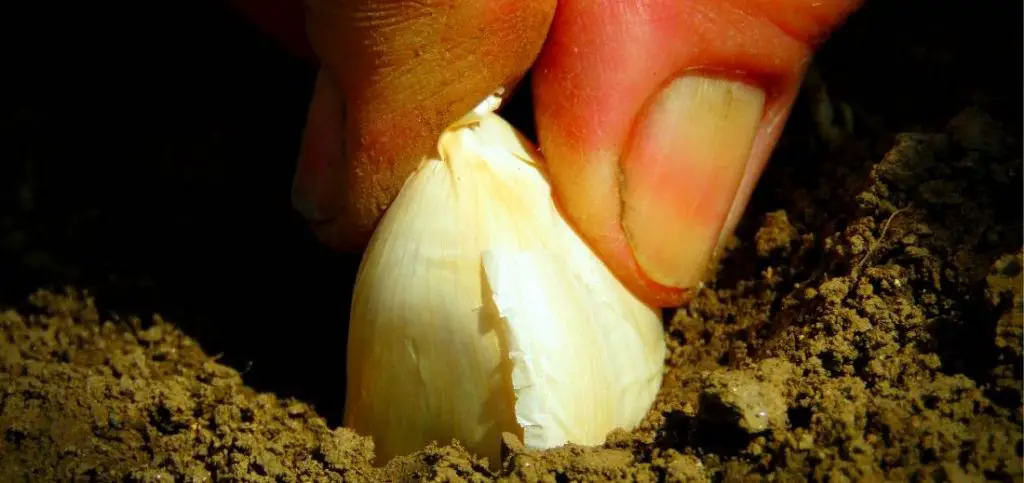
If you use mulch with leaves or straws to protect from severe frost. It also prevents the plant from weeds and retains moisture. 2 inches of mulch is needed for this purpose.
Watering
You can water the garlic plant deeply once a week. 1 inch of the water is enough to moisture the soil in the raised beds. Watering garlic is not necessary unless there is a drought, in which case water sparingly as garlic hates wet soil.
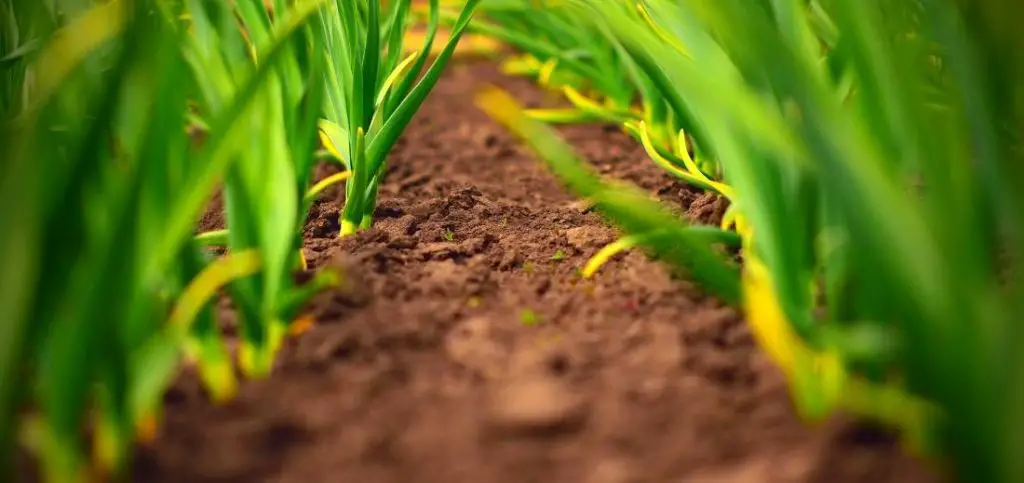
Weather is very dry and there is no rainfall, continue to give water if the temperature is not below the freezing point. Reduce the watering gradually as the seasons warm up. Hot and dry weather is necessary for garlic to mature its bulbs.
Sunlight
Make your decision about the location of the garlic plant, in your raised bed. Garlic needs a lot of sunlight so build your raised bed in this way, they will get proper light of the sun.
Read More: 5 Best Wooden Raised Garden Beds For Vegetables
Caring For Garlic Plants
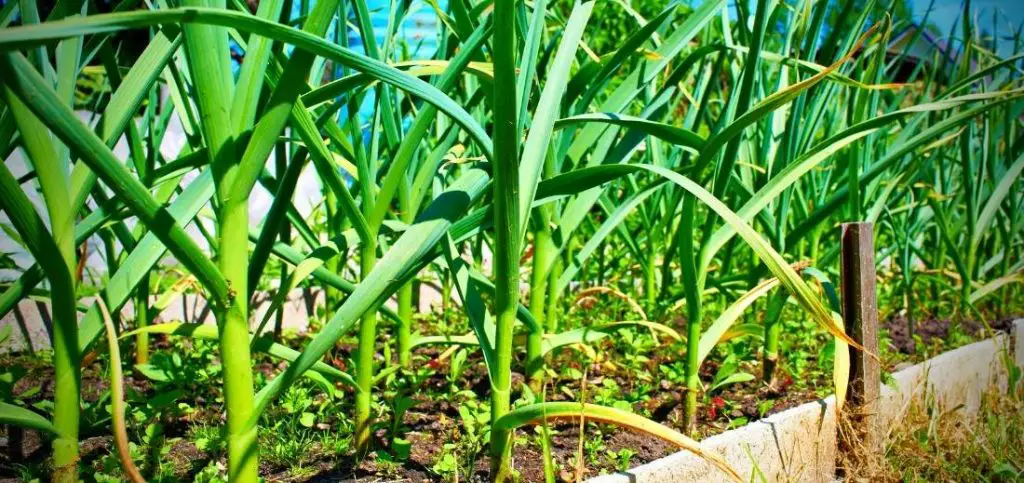
It is a very interesting thing that Garlic does not need any special attention.
- You only have to take care of them for 6 weeks because as the green tips emerge Birds may well try to pack them out and some birds are very good at doing this.
- Mice and other small creatures sometimes nest in the mulch. You can use plastic mulch or landscaping fabric to avoid this problem.
- Aphids(aphids are small sap-sucking insects) like garlic leaves, just rub your fingers over them and squash them or apply a pesticide to get rid of them. Using pesticides is a great option for this.
- Many fungi can occasionally attack garlic and become the source of spreading disease in garlic plants. At this point, you have to pull out the affected plants so you can stop the spreading of the disease to other garlic plants.
- If brown spots appear on the leaves then cut off those affected leaves immediately. One more thing, wash your hands before touching another plant because it can spread rust to other plants.
Growing garlic at home is very easy. You can grow it in your raised beds. Raised beds are very easy to maintain as compared to in-ground beds. There are many benefits of raised beds, you can prevent yourself from bending and kneeling.
If you have back pain or you are living in a rented house then it is the best option for you. Fresh garlic has great taste. The result of your little hard work is that you can cook from your own vegetables.
Harvest
When the foliage is turned into yellow-brown, it is the best time for garlic to harvest, this time maybe mid of August. Being harvesting at the end of the summer. Harvesting can continue well into autumn in most places. You should take action and get it out from the ground so it doesn’t rot.
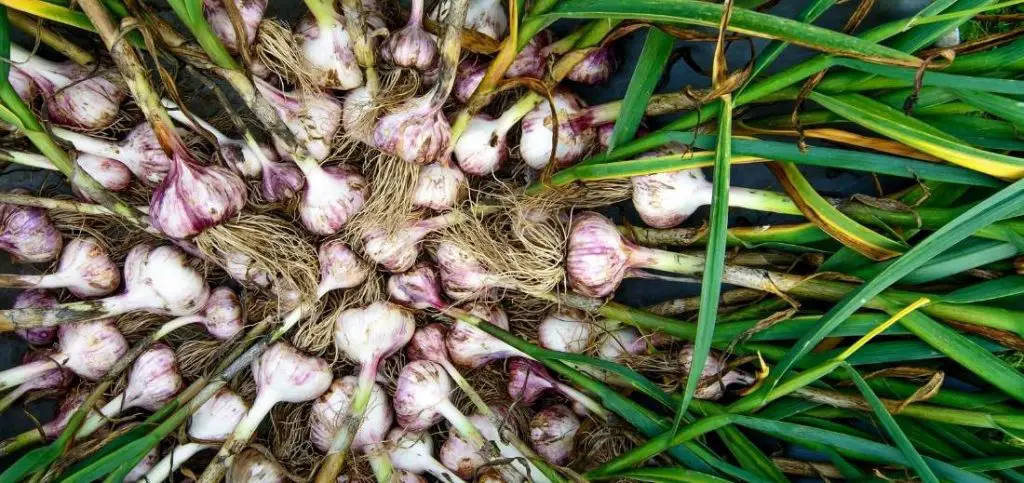
Great care must be taken before removing garlic from the ground if harvest too early and the bulbs will be small, harvest too late and the bulb will have split making harvest difficult and the cloves of low quality.
When you start harvesting the garlic, take out bulbs from the ground very gently with the help of a trowel. Do not remove the foliage but remove the excess soil which the bulbs have. You can dry the garlic bulbs easily in the air by hanging them or simply dry them in sunlight.
Storing
When the bulbs have been right cut the stem so that only 3 cm or 1 inches remains, now store them in a cool dry place in mesh bags, you will store them longer if you keep them in the dark.
Many people store garlic in the kitchen but for long storing it requires darkness. If you want to store garlic for a long time don’t keep them in an airtight container because garlic needs air.
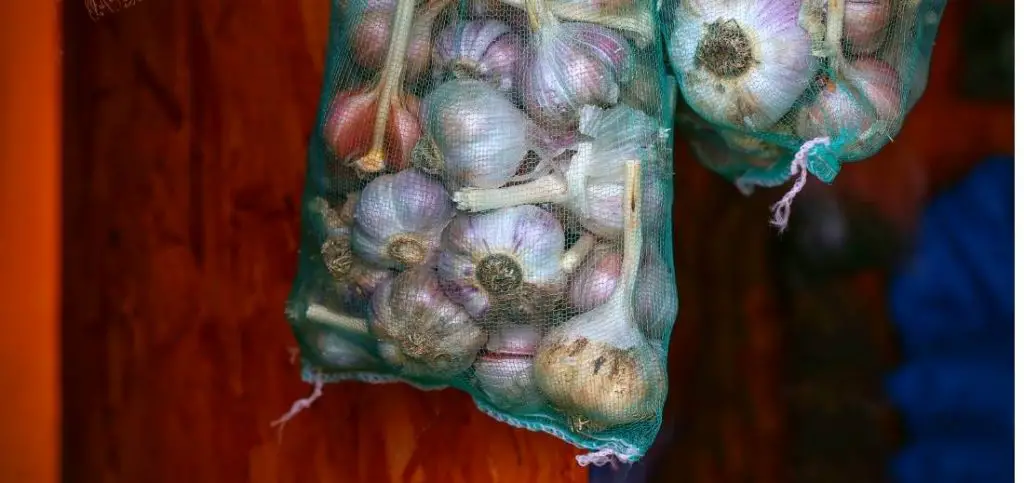
You can easily make a braid from garlic bulbs, select at least three largest garlic. Take the stems from the left and right and cross them over the one in the center. Take the stem on the bottom and bend it over the stem in the middle. Add another garlic bulb and repeat the process.
You can also store garlic in oil or vinegar. It will extend its storing time but care must be taken because you cannot store garlic in oil at room temperature. Keep it in the refrigerator and consume it quickly.
